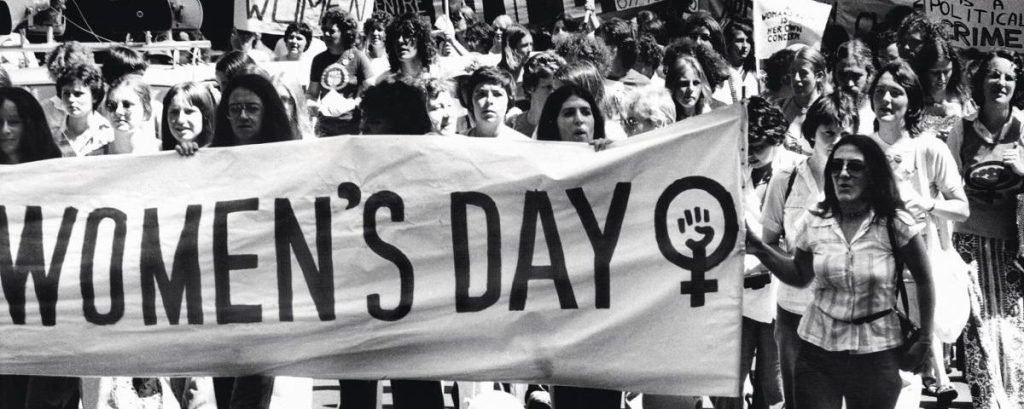
On this International Women’s Day (IWD), the official UN theme for 2021 is “women in leadership: achieving an equal future in a COVID-19 world.” The elimination of discrimination and violence against women and girls are targets of the Millennium Development Goals and the UN Agenda 2030, which emphasizes inclusivity in its Sustainable Development Goals (SDGs), including gender equality and the empowerment of all females in Goal 5. Goal 10 aims to reduce gender and socioeconomic inequalities globally, including through the elimination of discrimination, violence, exploitation, forced marriage, and female genital mutilation.
Dating back to the first celebration in 1909 in the United States, IWD is rooted in socialist women’s leadership in struggles for labor and economic justice, such as the 8-hour workday and limits on women’s and children’s labor; political justice, such as suffrage and liberation from fascism and autocracy; a refusal to sacrifice husbands and children to wars; and breaking down false barriers between “public” and “private” life that conceal the important roles of mothers and wives. Women’s efforts against poverty and violence have also been consistent IWD themes, including the structural violence of female subordination—“a tolerance of violence against women and children” and being “subjected to a life of sub-humanity for the sheer fact alone that they were born female,” as noted on IWD 2012.
To imagine a gender-equitable future from this historical moment in 2021 requires reckoning with how women and girls have been faring. For instance, since the start of the pandemic in the US women—disproportionately women of color—have left the work force at four times the rate of men, reversing previous gains. One of the more well-known outcomes of the COVID-19 pandemic is the escalation of domestic violence and sexual and gender-based violence (SGBV), triggered by prolonged social isolation, household tension in close quarters, and increasing strains on individuals and families due to deteriorating health, socio-economic, and/or political conditions. The “Forever Wars” and other conflicts around the world have also raged on during the pandemic, adding to the world’s refugee crisis in which 75-80% of displaced persons are women and children. Trauma is understandably a common preoccupation of our time.
Working at the intersection of human rights and trauma mental health, I have spent the last year writing about SGBV and trauma-informed approaches to interviewing female survivors for purposes of investigating human rights violations such as genocide, crimes against humanity, war crimes, and mass detention of people seeking refuge from violence and poverty. Among multiple things competing for our attention, mine has been focused intensely on militarism, conflict-related SGBV, impunity, and feminist activism amidst growing societal & global inequities and increasing violence in many forms—criminal, sexual, domestic, and political—during the pandemic. In the ongoing and escalating struggle for gender justice, urgent attention to violence remains important. Among the types of violence and harm SGBV stands out for several reasons. It is the only serious crime for which many justice systems require victims to prove lack of consent to the harm inflicted. Across diverse legal systems, redress for SGBV is difficult to attain due to attribution of blame and complicity to victims/survivors as well as impunity for perpetrators. SGBV has also historically been the least punished offense committed during wartime.
In the long history of international feminist activism, it is only recently that women’s efforts led to the recognition of conflict-related SGBV as a war crime against the long-standing idea that sexual violence against women, girls, men, and boys is an expected military reward or byproduct of war. Women’s campaigning for redress of this injustice, through UN human rights and women’s rights conferences and particularly since the 1990s International Tribunals for Rwanda and the Former Yugoslavia, resulted in its designation as a crime against humanity. “From time immemorial, rape has been regarded as spoils of war. Now it will be considered a war crime,” said Judge Pillay of the International Criminal Tribunal for Rwanda (later, the UN High Commissioner for Human Rights).
However, all forms of SGBV persist, supported by strong ideological underpinnings: state-supported violence, militarized masculinity, and victim-blaming alongside perpetrator impunity. These thrive in a broader context of social, economic, civil, and political inequities. SGBV is founded on sexist beliefs and compounded by other structural inequalities in the context of globalized discourses of militarized masculinity that merge sex and violence, and which are amplified through warfare. The globally pervasive threat of SGBV reduces the quality of life for targeted persons—disproportionately women, girls, and gender non-conforming persons—and is particularly acute in hyper-masculinist institutions in which sexual assault rates are often highest, such as in militaries. Conflict-related SGBV inflicts collective trauma by systematically targeting individual bodies in furtherance of broader social harms such as the mass displacement, dispossession, and extermination of entire neighborhoods and communities. Female survivors of conflict-related SGBV have reported feelings of complete insecurity and multiple losses: bodily integrity, health, loss of family and their livelihoods, disorientation and lack of belonging, profound dispossession of their personal identity, and marginalization.
Continue reading